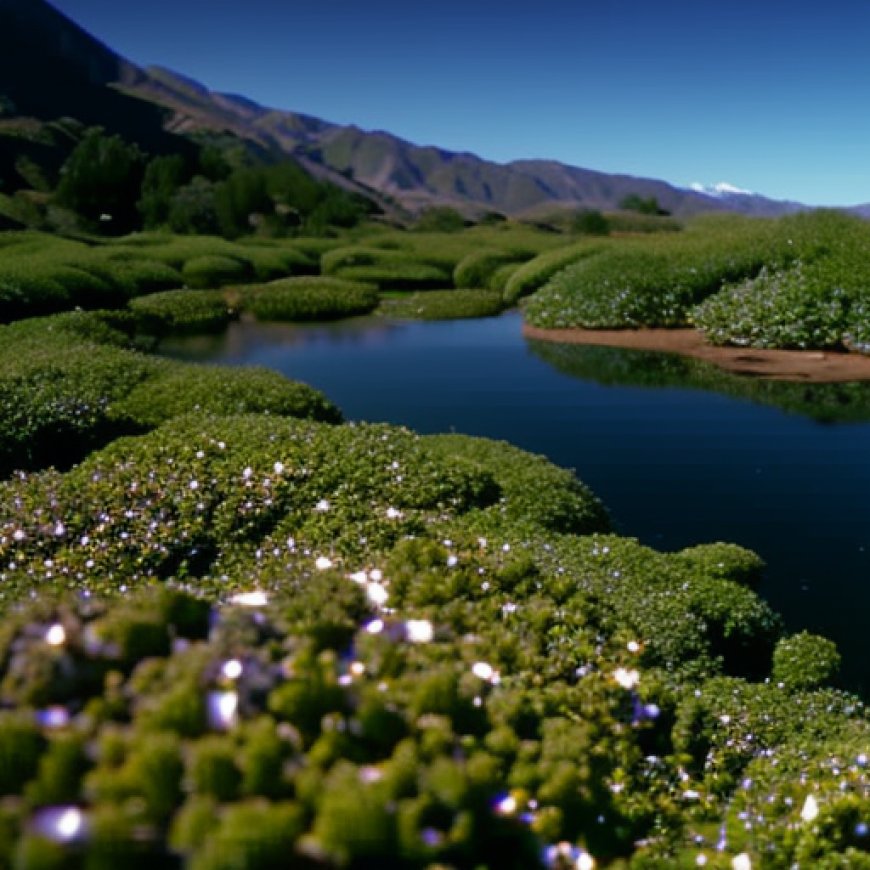Threats to California’s freshwater ecosystems and how to increase their resiliency


Climate Change Adaptability in California: Enhancing Resiliency to Climate Change

Introduction
The Proceedings of the National Academy of Sciences (PNAS) has published a special journal issue focusing on climate change adaptability in California. Researchers from the University of California, Berkeley, the University of Nevada, Reno, and the Pacific Institute have contributed a scientific perspective on the challenges and opportunities faced by California’s freshwater ecosystems. The researchers propose the establishment of a large-scale monitoring and modeling network, as well as inclusive collaborations, to facilitate evidence-based policy aimed at enhancing resiliency to climate change.
California’s Unique Ecosystems and the Need for Sustainability
California, with its fifth largest economy in the world, is home to many unique ecosystems. Sustaining the waters of California, from rivers and estuaries to lakes and groundwater, is crucial. These aquatic ecosystems play a vital role in supporting the state’s economy, particularly in agriculture and tourism. The stability and sustainability of these ecosystems are essential for the success of tourism hotspots like Lake Tahoe and other mountain ecosystems. Comparing impacted and intact ecosystems can provide valuable insights into their response to change and guide efforts to enhance resiliency. To achieve this, modeling and monitoring efforts should consider the extent of alteration in these ecosystems.
Threats to Different Ecosystems
California’s Central Valley, known as the breadbasket of the world, has been heavily impacted by human activities, particularly agriculture. The conversion of wetlands into agricultural land has led to the loss of habitat for many native species and reduced climate resilience. In contrast, rivers in California’s North Coast Range and the state’s alpine lakes have been less impacted. However, with changing snowpack, temperature variability, and other factors, models reflecting these ecosystems need to be regularly updated to remain accurate.
The Importance of Modeling and Collaborations
Developing accurate models that reflect the impact of climate change on California’s ecosystems is crucial for effective management strategies. Predictive mapping, which combines experimental results with natural variables, can provide valuable insights into the effects of climate change on local ecology. The researchers emphasize the need for large-scale collaborations involving government agencies, universities, tribes, research institutes, consultants, and non-governmental organizations to enhance understanding of freshwater ecosystems. Long-term field studies, policy development, and education and training of water experts are also essential for progress in water sustainability.
Conclusion
Efforts to enhance resiliency to climate change in California’s freshwater ecosystems require a comprehensive approach. By establishing a monitoring and modeling network, fostering collaborations, and conducting long-term field studies, policymakers and scientists can develop evidence-based policies and management strategies. The Sustainable Development Goals (SDGs), particularly Goal 13: Climate Action and Goal 15: Life on Land, provide a framework for addressing the challenges and opportunities associated with climate change adaptability in California.
SDGs, Targets, and Indicators
1. Which SDGs are addressed or connected to the issues highlighted in the article?
- SDG 6: Clean Water and Sanitation
- SDG 13: Climate Action
- SDG 15: Life on Land
2. What specific targets under those SDGs can be identified based on the article’s content?
- SDG 6.6: By 2020, protect and restore water-related ecosystems, including mountains, forests, wetlands, rivers, aquifers, and lakes.
- SDG 13.1: Strengthen resilience and adaptive capacity to climate-related hazards and natural disasters in all countries.
- SDG 15.1: By 2020, ensure the conservation, restoration, and sustainable use of terrestrial and inland freshwater ecosystems and their services.
3. Are there any indicators mentioned or implied in the article that can be used to measure progress towards the identified targets?
- Indicator for SDG 6.6: Percentage of water-related ecosystems that are protected and restored.
- Indicator for SDG 13.1: Number of countries with policies, strategies, and plans for climate change adaptation.
- Indicator for SDG 15.1: Percentage of terrestrial and inland freshwater ecosystems that are conserved, restored, and sustainably used.
Table: SDGs, Targets, and Indicators
| SDGs | Targets | Indicators |
|---|---|---|
| SDG 6: Clean Water and Sanitation | Target 6.6: By 2020, protect and restore water-related ecosystems, including mountains, forests, wetlands, rivers, aquifers, and lakes. | Indicator: Percentage of water-related ecosystems that are protected and restored. |
| SDG 13: Climate Action | Target 13.1: Strengthen resilience and adaptive capacity to climate-related hazards and natural disasters in all countries. | Indicator: Number of countries with policies, strategies, and plans for climate change adaptation. |
| SDG 15: Life on Land | Target 15.1: By 2020, ensure the conservation, restoration, and sustainable use of terrestrial and inland freshwater ecosystems and their services. | Indicator: Percentage of terrestrial and inland freshwater ecosystems that are conserved, restored, and sustainably used. |
Source: tahoedailytribune.com








